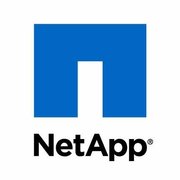Data Replication Software
Data Replication Software Overview
Best Data Replication Software include:
Qlik Replicate, Carbonite Availability (formerly DoubleTake), IBM Spectrum Protect, NetApp SnapMirror, SharePlex, Dell EMC RecoverPoint, Veritas InfoScale Operations Manager (formerly Veritas Volume Manager), IBM InfoSphere Data Replication, HPE Cloud Volumes, and HVR.
Data Replication Products
(1-25 of 37) Sorted by Most Reviews

Rubrik
Rubrik is cloud data management and enterprise backup software provided by Palo Alto-based Rubrik, Inc. It is a software platform that provides backup, instant recovery, archival, search, analytics, compliance, and copy data management in one secure fabric across data centers and…
Key Features
- Snapshots (97)97%9.7
- Management dashboard (98)96%9.6
- Retention options (98)93%9.3

Qlik Replicate
Qlik Replicate enables organizations to accelerate data real-time replication, ingestion and streaming via change data capture, across a wide range of heterogeneous databases, data warehouses and data lake platforms.

Fivetran replicates applications, databases, events and files into a high-performance data warehouse, after a five minute setup. The vendor says their standardized cloud pipelines are fully managed and zero-maintenance. The vendor says Fivetran began with a realization: For modern…
Key Features
- Connect to traditional data sources (7)87%8.7
- Simple transformations (6)80%8.0
- Data model creation (6)76%7.6

Hevo Data is a no-code, bi-directional data pipeline platform specially built for modern ETL, ELT, and Reverse ETL Needs. It helps data teams streamline and automate org-wide data flows that result in a saving of ~10 hours of engineering time/week and 10x faster reporting, analytics,…
Key Features
- Simple transformations (5)100%10.0
- Data model creation (5)84%8.4
- Complex transformations (5)78%7.8
Learn More About Data Replication Software
What are Data Replication Tools?
Data replication tools support data security, disaster resilience and business continuity by rapidly creating a data replica in a location independent of the data’s source. The software provides central management of replication policy across heterogeneous data sources and targets. Different from backups, data replicas update frequently rather than retaining one unchanged copy for an extended period.
Data replication tools ensure consistency for end-users accessing multiple data stores in the normal course of business. Other potential uses are zero-downtime data migration, and multi-site replication for business continuity in case of site disaster. Data replication is a necessary part of long-term data retention and archiving. More recently, data replication software is offered to provide real-time transactional data delivery and integration into data lakes to support big data initiatives.
Vendors boast data policy compliance, any-point-in-time recovery and failover, and continuous replication with limited risk of data loss. They compete on providing minimum disruption to network activities and low bandwidth consumption, without cost to security. Leading vendors also enable change tracking within databases, known as “change data capture.”
Data Replication Types
There are several approaches to data replication that organizations can utilize. Full replication entails replicating and storing the entirety of a database’s information in another site. This is the most resource-intensive form of replication, but also the most comprehensive and useful in disaster recovery use cases.
Partial replication replicates specific fragments of the source database. These may be particularly critical segments of the database, or heavily-used fragments. In the former case, data replication tools can ensure availability of crucial data at lower cost than full replication. In the latter case, replicating high-traffic segments also segments the traffic to each data source, improving performance of the source database. Partial replication is also less resource-intensive and expensive, which can be valuable for some use cases.
Data Replication Tools Features
Data replication applications provides the following features:
Continuous replication with many recovery points
Cross-platform replication (e.g. disk to cloud, cloud to disk)
Database replication in remote locations
Automated compliance-driven data retention
Instant failover, automatic user redirect to secondary server
Monitor replication environment via GUI
Disaster recovery simulation, testing
Synchronous data replication with zero data loss
Asynchronous data replication for performance
Orchestration of data replication, migration
Perform analytics upon data sets separately
Data Replication Software Comparison
When comparing different data replication tools, consider these factors:
Scale: Buyers should consider how many sources and targets the business wants to replicate from and too. The scale of data replication can vary dramatically across organizations. Not every replication tool can handle a high volume of varied targets equally. Evaluate the specs of each product to ensure that they can handle your data scope.
Accessibility: How accessible are data replicas to the necessary users? A key secondary question is: who in the organization will need to access and work with data replicas? If business users or secondary systems need to leverage data replicas, then accessibility and ease of use should be higher priorities than if only IT specialists needed access to the replicated data.
Cloud Support: Are there cloud-based databases that need to be replicated, or only on-premise data sources? Many leading replication tools support replication agnostic of on-prem or cloud-based sources. However, some products are behind the curve on this functionality, and some organizations may not need it at all. Buyers should ensure that they’re paying for the right level of functionality, lest they overpay or be underserved.
Start a data replication software comparison here
Pricing Information
Data replication software is available on a paid subscription basis. Pricing scales with the number of data sources to be replicated, or volume of data. It may also scale with data destination, and whether or not data storage destination is managed by the replication service provider.
















